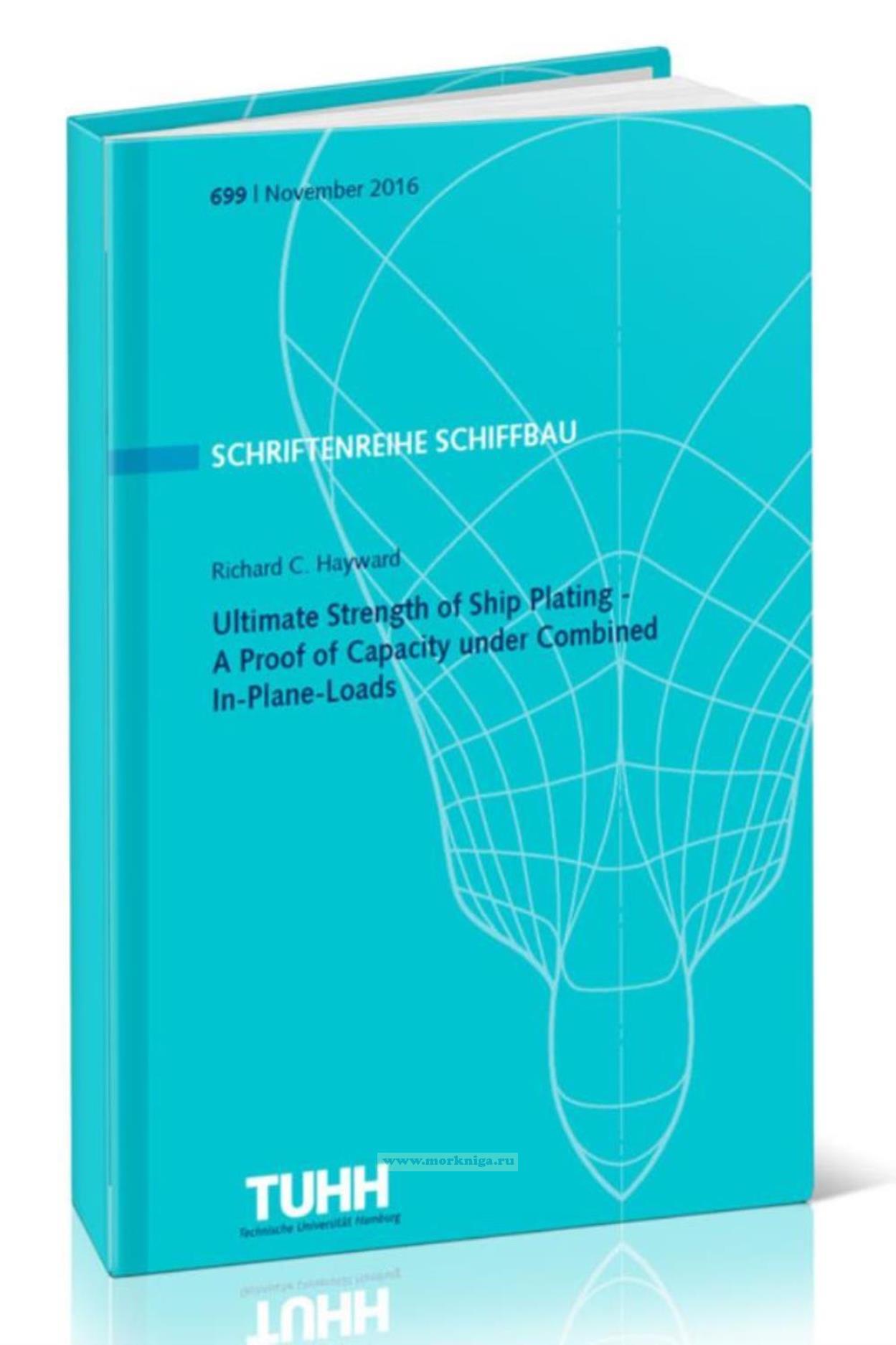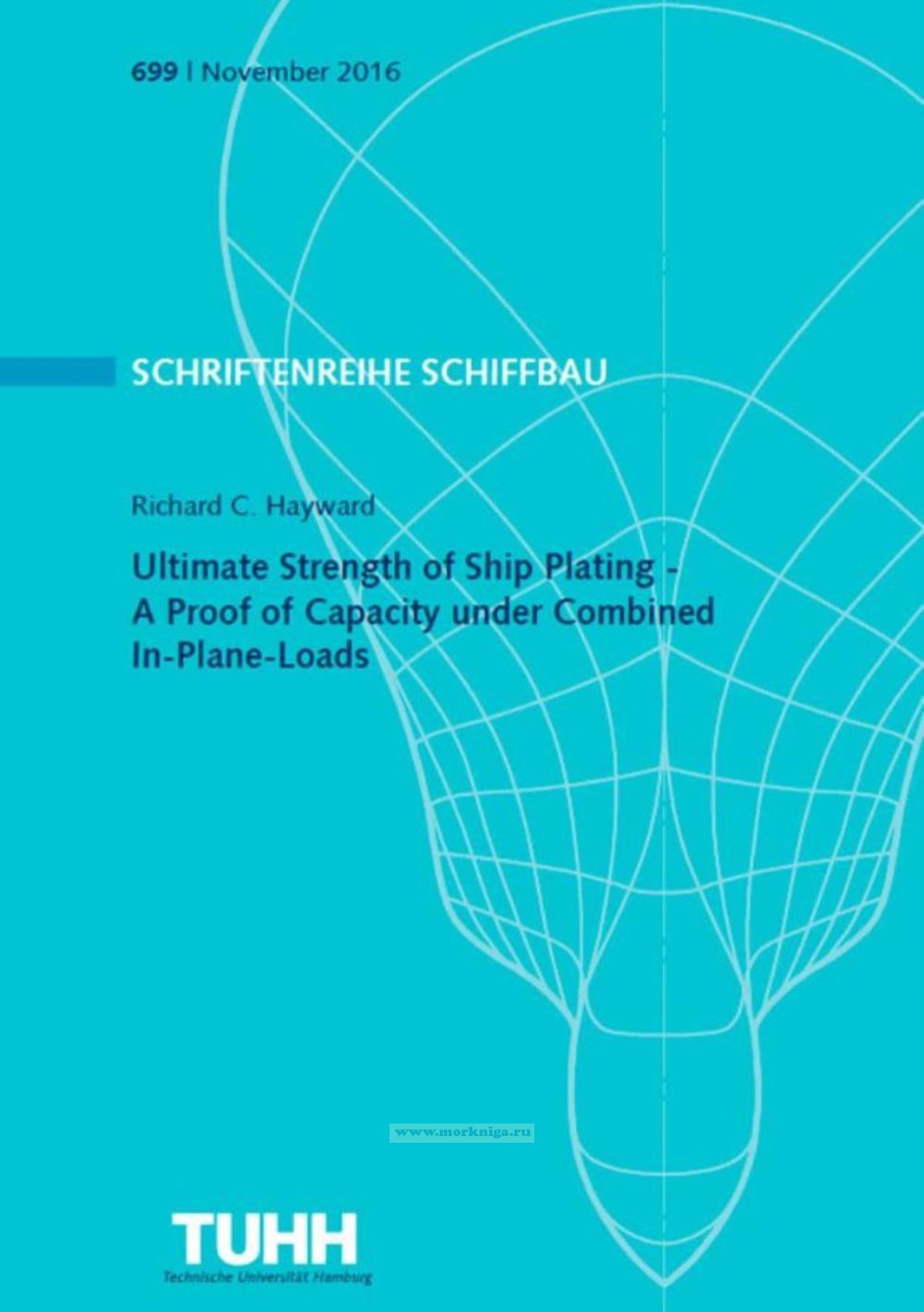Сб с 10 до 16
Ultimate Strength of Ship Plating. A Proof of Capacity under Combined In-Plane-Loads/Предел прочности судовой обшивки. Доказательство работоспособности при комбинированных нагрузках в плоскости
Издание на английском языке
The present work addresses the need for a proof of plate capacity under combined in-plane loads, a need recently highlighted by the loss of the post-panamax container ship MOL Comfort.Towards this end, an extensive series of numerical studies based on the finite element method have been performed covering all load combinations and plating configurations relevant for the shipbuilding industry. These studies have been used to investigate the mechanics of plating collapse (including the effects of plate slenderness and aspect ratio) under longitudinal, transverse and shear loads in isolation and in combination. Numerical studies have also been used to quantitatively evaluate existing proofs of plate capacity found in both literature and the shipbuilding industry.
Contents
1. Introduction
1.1. Purpose
1.2. Scope and outline
2. Mechanics of Plating Collapse
2.1. Uniaxial compression
2.1.1. Ideal plates
2.1.2. Effective width concept
2.1.3. Effects of initial deflections
2.1.4. Effective width formulae used in shipbuilding
2.2. Biaxial loads
2.2.1. Ideal plates - compressive secondary stress
2.2.2. Ideal plates - tensile secondary stress
2.2.3. Internal stress distributions
2.2.4. Capacity curves
2.3. In-plane shear
2.3.1. Ideal plates
2.3.2. Tension field analysis
2.3.3. Effects of initial deflections
2.3.4. Formulae for plate reduction factors
2.3.5. Reduction in uniaxial/biaxial capacity due to shear
2.4. Effects of plate aspect ratio
2.4.1. Uniaxial loads
2.4.2. Biaxial loads
2.4.3. In-plane shear
3. Existing Proofs
3.1. Quantitative evaluation scheme
3.1.1. Precision and bias
3.1.2. Robustness
3.2. Proofs from literature
3.2.1. Paik
3.2.2. Ueda et al
3.3. Proofs from shipbuilding practice
3.3.1. Elastic analyses with plasticity correction (DnV and GL)
3.3.2. PULS (DnV)
3.3.3. Amended DIN 18800 (GL)
3.3.4. Provisional CSR BC & OT (BV)
4. New Proof
4.1. Problem statement
4.1.1. Quantitative Criteria
4.1.2. Qualitative Criteria
4.2. Evaluation of existing proofs
4.3. Development and evaluation of new proof
4.3.1. Framework of new proof
4.3.2. Hypothetical Proof of Plate Capacity
4.3.3. Exponent e0 (Quadrant 1)
4.3.4. Interaction Coefficient B (Quadrant 1)
4.3.5. Quantitative evaluation
4.4. CSR BC & OT proof
4.4.1. Quantitative evaluation
5. Design Application
5.1. Proof of stiffened panel strength
5.1.1. Proof of sufficient plate capacity
5.1.2. Proof of sufficient stiffener capacity
5.2. Examples of design application
5.2.1. Bottom shell plating (x-y)
5.2.2. Side shell plating (x-xy)
6. Conclusions
6.1. Summary of results and conclusions
6.2. Summary of contributions
6.3. Future research
7. References
Appendices
Appendix A. Proof of Curved Plate Capacity
A.1. Evaluation of proof under two stress components
A.2. Evaluation of proof under three stress components
Appendix B. Numerical Studies
B.1. Description of finite element analyses
B.1.1. General
B.1.2. Model extent
B.1.3. Element type and meshing
B.1.4. Material properties and real constants
B.1.5. Boundary conditions and load application
B.1.6. Initial imperfections
B.1.7. Solution algorithm
B.2. Validation of procedure
B.2.1. Comparison with stiffened panel tests
B.2.2. Comparison with unstiffened plate tests
Appendix C. Evaluation Data
C.1. Tabular Results
C.2. Graphical Results
Appendix D. Calibration Data
D.1. Tabular Results
D.2. Graphical Results

